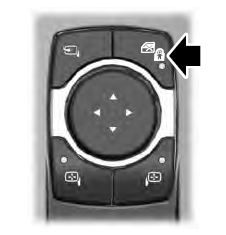Lincoln Aviator 2020-2025 Service Manual / Powertrain / Engine / Engine System - General Information / General Procedures - Connecting Rod Bearing Journal Clearance
Lincoln Aviator: Engine System - General Information / General Procedures - Connecting Rod Bearing Journal Clearance
Check
NOTE: Refer to the appropriate Section 303-01 for the specification.
-
NOTE: The crankshaft connecting rod journals must be within specifications to check the connecting rod bearing journal clearance.
Remove the connecting rod bearing cap and connecting rod bearing.
-
Position a piece of Plastigage across the bearing surface.
.jpg) |
-
NOTE: Do not turn the crankshaft during this step.
Install and tighten to specifications, then remove the connecting rod bearing cap.
-
Measure the Plastigage to get the connecting rod bearing
journal clearance. The Plastigage should be smooth and flat. A changing
width indicates a tapered or damaged connecting rod or connecting rod
bearing.
.jpg) |
 General Procedures - Camshaft Surface Inspection
General Procedures - Camshaft Surface Inspection
Inspect the camshaft lobes for pitting or damage in the
active area. Minor pitting is acceptable outside the active area. The
active area includes the opening ramp and closing ramp...
 General Procedures - Crankshaft Main Bearing Journal Clearance
General Procedures - Crankshaft Main Bearing Journal Clearance
Check
NOTE:
Refer to the appropriate Section 303-01 for the specification.
NOTE:
Crankshaft main bearing journals must be within specifications before checking journal clearance...
Other information:
Lincoln Aviator 2020-2025 Service Manual: Removal and Installation - Liftgate Release Switch
Special Tool(s) / General Equipment Interior Trim Remover Removal Remove the liftgate moulding. Refer to: Liftgate Moulding (501-08 Exterior Trim and Ornamentation, Removal and Installation). Remove the liftgate release switch...
Lincoln Aviator 2020-2025 Service Manual: Diagnosis and Testing - Cruise Control
Diagnostic Trouble Code (DTC) Chart Diagnostics in this manual assume a certain skill level and knowledge of Ford-specific diagnostic practices. REFER to: Diagnostic Methods (100-00 General Information, Description and Operation). Diagnostic Trouble Code Chart Module DTC Description Action PCM P0504:00 Brake Switch A / B Correlation: No Sub Type Information GO to Pinpoint Test B PCM P0572:00 Brake Switch "A" Circuit Low: No Sub Type Information GO to Pinpoint Test B PCM P0573:00 Brake Switch "A" Circuit High: No Sub Type Information GO to Pinpoint Test B PCM P1703:00 Brake Switch Out Of Self - Test Range: No Sub Type Information GO to Pinpoint Test B PCM P1935:00 Brake Switch/Sensor Signal: No Sub Type Information GO to Pinpoint Test B SIMA P0564:11 Cruise Control Multi-Function Input "A" Circuit: Circuit Short To Ground GO to Pinpoint Test A SIMA P0564:12 Cruise Control Mulit-Function Input "A" Circuit: Circuit Short To Battery GO to Pinpoint Test A SIMA P0564:13 Cruise Control Mulit-Function Input "A" Circuit: Circuit Open GO to Pinpoint Test A SIMA P0589:11 Cruise Control Multi-Function Input "B" Circuit: Circuit Short To Ground GO to Pinpoint Test A SIMA P0589:12 Cruise Control Mulit-Function Input "B" Circuit: Circuit Short To Battery GO to Pinpoint Test A SIMA P0589:13 Cruise Control Mulit-Function Input "B" Circuit: Circuit Open GO to Pinpoint Test A Global Customer Symptom Code (GCSC) Chart Diagnostics in this manual assume a certain skill level and knowledge of Ford-specific diagnostic practices...
Categories
- Manuals Home
- Lincoln Aviator Owners Manual
- Lincoln Aviator Service Manual
- Interior Lamps
- Garage Door Opener
- Tire Change Procedure
- New on site
- Most important about car
Child Safety Locks
When the child safety locks are set, you cannot open the rear doors from the inside.

The child safety lock control is on the driver door.
Press the control to switch the child safety locks on. Press the control again to switch them off. A light on the child safety control illuminates when you switch them on.
Copyright © 2025 www.liaviator2.com
